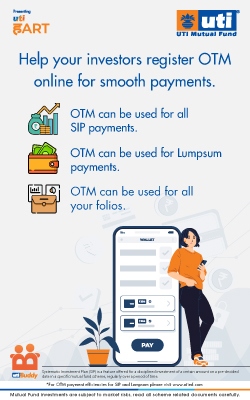A well drafted newsletter though time consuming, can reap great benefits for the financial advisors
With the advent of technology, newsletters can be used as an effective tool in reaching out to clients and creating awareness among them. It not helps in strengthening the bond with existing clients but also in acquiring new ones.
Newsletters can be sent to the clients through email, in printed form or a combination of both. Suresh Sadagopan of Ladder7 Financial Advisories says, “Newsletters in the form of email are more cost effective than the printed ones. Apart from being economical, you can be confident that it reaches the right person, which is not the case in printed form of newsletters.”
However, not all clients are used to online reading; some may prefer to have newsletters in printed form. Hence an advisor needs to be careful while dealing with different types of clients.
Points to remember while creating newsletters:
· The content of the newsletter should not lay emphasis on products; rather it should be concept based.
· The content of the newsletter should be precise, simple and useful to the clients.
Nisreen Mamaji of Moneyworks Financial Advisors says, “The information provided in the newsletters should not be confined to mutual funds, but it should also include other information related to personal finance. It can be made interesting by using a mix of 3-4 articles.”
Here are few benefits of using newsletters:
Boost Website Traffic
Newsletters help in attracting clients to visit the advisors website, which in turn helps increase the website traffic.Recipients of the newsletter, often take action by visiting the website or by responding. They also help in building the online community.
Easily shared
Clients can easily forward the newsletter among their own contacts. It also helps in gaining new subscribers, which in turn leads to higher exposure and credibility.
Platform for showcasing expertise
When advisors give their views on the market conditions and present financial news in an interesting manner through newsletter, clients gain a better and deeper understanding of personal finance issues. Hence, newsletters can act as a platform for the advisors to showcase their expertise.
Client engagement
One of the biggest challenges for any business is customer retention. It is the best way to build relationship with clients because advisors cannot call their clients regularly. It also helps the advisors to keep the clients updated about new happenings in the industry.
Stay top-of-mind
Even if the recipients don’t open the newsletter, they see the advisors name or his/her firm’s name every time the email arrives. This keeps their name in the top of the minds of the clients and prospects. It may also remind the clients to contact them for one reason or another. Nisreen Mamaji of Moneyworks Financial Advisors adds, “It is a way in which advisors can keep in touch with clients. The recipients may or may not read it, but it gives them an assurance that you are there, looking after their portfolios and providing them financial insights.”
Helps in analysis
Newsletters sent through emails can be tracked and the effectiveness can be measured in terms of the number of emails sent, the number of times the prospects viewed the newsletter and how many visitors viewedthe website.
Not all enquiries made by the prospects convert into clients. Financial advisors need to give time to prospects to absorb and acknowledge the advisor and the newsletter. Hemant Rustagi of Wiseinvest Advisors says, “Advisors need to give reasonable time to the prospects to get accustomed to the newsletter. On an average, clients take 6-7 months to acknowledge the newsletter.We have been able to increase our client base substantially through our communication with investors and prospects”.
Thus, by regularly communicating with the clients through newsletters, advisors can create a long term relationship with new and existing clients. A well drafted newsletter though time consuming, can reap great benefits for the financial advisors.
Share with us your experience.





